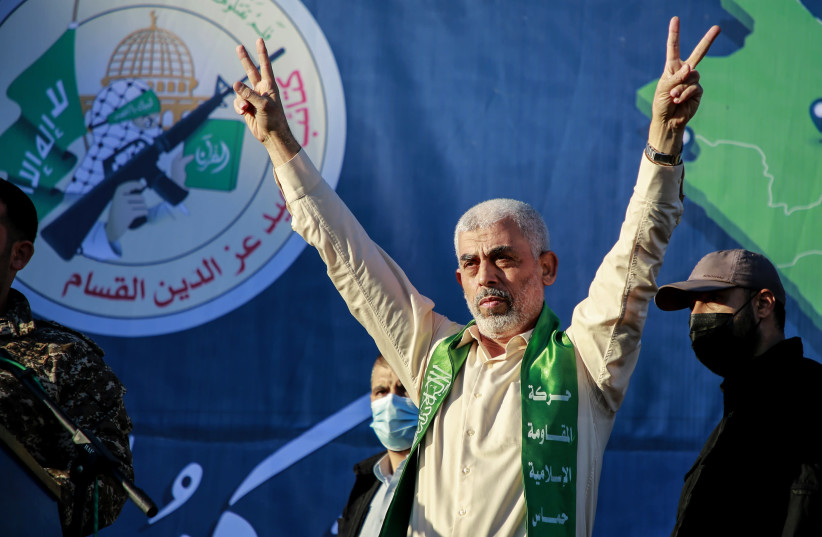Dangerous honey-trap: What is Hamas’s Sinwar plan for IDF after ceasefire?
There is a growing estimation amongst Israeli authorities that Yahya Sinwar, the leader of Hamas in Gaza, intends to exploit a humanitarian crisis in the southern Gaza Strip. The outcome of this strategy would be substantial international pressure that could deter the Israel Defense Forces (IDF) from intensifying its operations in the Khan Yunis area, which serves as Sinwar’s main command center. The concern is that the Israeli forces might settle for a relatively limited operation, one that would not significantly harm Hamas’s vital assets.
Sinwar, the leader of Hamas in Gaza, is believed to be planning to delay the resumption of ground operations after the ceasefire, according to current assessments in Israel.
Within the Coordinator of Government Activities in the Territories (COGAT) and the Foreign Ministry, there is a belief that several Arab and European countries are planning to bolster the southern Gaza Strip with humanitarian aid. Their aim is to assist more than a million refugees residing in the region.

Officials from both of these bodies share the view that Hamas will wait for the arrival of the French field hospital, and the entry of international aid organizations and logistics forces from various countries. They anticipate that these events will trigger a campaign highlighting a humanitarian crisis in the region.
“Sinwar isn’t merely biding his time,” explained a knowledgeable source. “He’s actively seeking momentum. This is the trap he’s setting. The longer time passes, the more he will publicize images of a tent city to depict the southern Gaza Strip as an area experiencing an international humanitarian crisis. In this way, he intends to exert pressure on the IDF and thwart its attempts to intensify operations in the south.”
What might the IDF decide to do?
In such a tense situation, the IDF might opt for a relatively limited operation. Instead of targeting Khan Yunis or Rafah, it’s possible that the Israeli forces will focus on central camps, such as Nusseirat, Al-Burayj, and Deir al-Balah.
Alternatively, they might conduct limited operations in areas within the southern Gaza Strip that are not classified as humanitarian zones. However, such actions are unlikely to exert significant military pressure on Hamas and will, therefore, not contribute to the release of additional hostages.
To apply direct pressure on Sinwar, the IDF would need to position tanks in the immediate vicinity of his command center, such as in Khan Yunis. If Sinwar does not perceive forces in control of the areas close to his location, he may doubt that the IDF intends to escalate operations in Khan Yunis. In such a scenario, the entry of maneuvering forces into an area housing a million refugees is considered particularly problematic.
There is a growing concern that diplomatic pressure could halt the IDF’s momentum. For instance, Jordan has already refused to open a Jordanian hospital in the vicinity of Shifa Hospital. This, to a large extent, constitutes the honey trap that Sinwar is preparing for the IDF, and it remains to be seen how Israel will navigate this situation, both militarily and diplomatically.





Comments are closed.